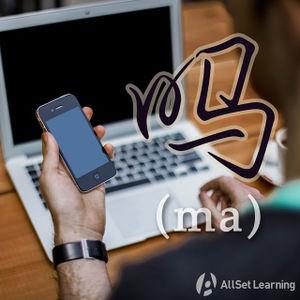Tag questions with "ma"
-
Level
-
Similar to
-
Used for
-
Keywords
As well as yes / no questions, you can also form tag questions with 吗 (ma). Tag questions are quick questions that are tagged on the end of a sentence to ask for confirmation. In English, this is often done with "right?", or by adding the negative form of the verb phrase - e.g., "isn't it?".
The easiest way to do this in Chinese is to add an adjective and 吗 (ma) on the end of the sentence.
Basic Pattern
A you can see below, the pattern typically involves words like 好 (hǎo), 对 (duì), 是 (shì), or 可以 (kěyǐ), followed by 吗 (ma).
- ……, 好 吗? ..., all right?
- ……, 对 吗? ..., right?
- ……, 是 吗? ..., is that it?
- ……, 可以 吗? ..., is that OK?
By placing these on the end of a sentence, you can soften a suggestion or request confirmation.
Examples
- 我们 喝 茶 , 好 吗 ? Let's drink some tea, OK?
- 我们 去 咖啡 店 , 好 吗 ? Let's go to the cafe, OK?
- 你 喜欢 他 , 是 吗 ? You like him, don't you?
- 去 吃 中国 菜 , 好 吗 ? We are going to go to eat Chinese food, OK?
- 他 是 你 哥哥 , 对 吗 ? He is your older brother, right?
- 她 不 知道 , 对 吗 ? She doesn't know, right?
- 这样 做 , 对 吗 ? Like this, right?
- 你 没有 来 过 , 是 吗 ? You haven't been here, right?
- 给 我们 米饭 , 可以 吗 ? Give us some rice, OK?
- 妈妈 , 我 要 吃 巧克力 , 可以 吗 ? Mom, I want to eat chocolate, may I?
See also
Sources and Further Reading
- Chinese: An Essential Grammar, Second Edition (pp. 144-145) →buy
- New Practical Chinese Reader 1 (新实用汉语课本1) (p. 218) →buy
- Integrated Chinese: Level 1, Part 1 (3rd ed) (p. 106) →buy



